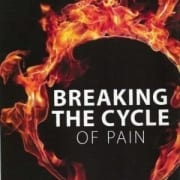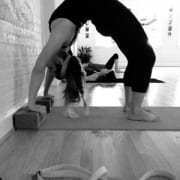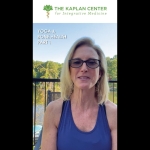Research Confirms This Ancient Practice Helps With Low Back Pain
We are at a crossroads in the applications of yoga for modern medicine. Traditionally, yoga was designed to promote harmony within the body and with the natural world. Modern medicine is now acknowledging that this ancient approach of breath practices, movement, and meditation is proving beneficial for an issue that plagues many Americans: back pain.
If your smoke alarm sounded, imagine cutting the wires to the alarm instead of putting out the fire. This is what many of us are doing when it comes to our health.
Back pain remains a primary reason many Americans find themselves on over-the-counter NSAIDS and even prescription narcotics. As common as it is for us to want to cover up symptoms rather than address the root of the problem, it gets us nowhere, fast. We end up addicted to medications to help us get through the day (or night), experiencing side effects like heartburn and worse, all the while allowing the underlying problem to fester.
Research published in the Annals of Internal Medicine put yoga side by side with physical therapy (PT), one of the most widely prescribed treatments for low back pain, and found that yoga had “almost the same amount of improvement in pain and activity limitation over time” as PT.
However, patients are strongly encouraged to consult a physician before engaging in a yoga routine to establish limitations and avoid further injury. The research also gives hope that insurance companies will more widely offer yoga as a covered treatment.
Yoga eases back pain first by increasing awareness.
When our bodies are in pain, we tend to “check out” – we don’t want to feel it. However, the body is full of wisdom when we stop to listen to it. Inherent in any imbalance is the mechanics of its healing. As you tune into your body, you gain a natural understanding of what needs strengthening, what needs to stretch, and what needs to relax.
We start by deepening the breath and learning to direct the breath into the back and hips. Beginning with gentle movements, we increase the flow of energy into areas of the body weakened by pain and lack of use. Health is flow. Imagine what a stagnant pond looks like; all sorts of microbes and bacteria can fester there. Now imagine a clear flowing stream; illness and pain can’t take hold as easily when energy is flowing. It is important to focus both on strengthening and stretching – many people over-stretch when in pain. However, the key for back pain is increasing stability; this means engaging your core, back, and hip muscles while also allowing them to lengthen.
Lastly, meditation is key.
They call back pain the “new ulcer” — a societally acceptable physical manifestation of stress, the way ulcers used to be. As with any stress-related illness, the key is learning to calm and soothe the nervous system and to increase your love and appreciation of yourself and of life. Meditation helps to press the pause button. It offers a choice as to where you place your attention — I can choose to focus on the pleasant feeling of breath in my body right now, rather than running a mental movie in my head about something that is going (or not going) to happen tomorrow. As our present-moment awareness grows, the tension in our bodies dissolves.
Yoga is a systematic approach to health and happiness that has an infinite variety of applications. May you discover the power of yoga to support you on your journey toward health.
* Before starting any new exercise routine, patients should discuss potential limitations with a physician.
We are here for you, and we want to help.
Our goal is to return you to optimal health as soon as possible. To schedule an appointment please call: 703-532-4892 x2
This article was originally published in June 2017. It was reviewed and updated in September 2023.









Leave a Reply
Want to join the discussion?Feel free to contribute!